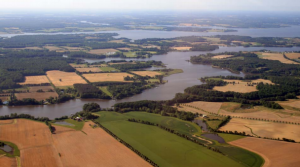
The Chesapeake Bay Total Maximum Daily Load (TMDL), a multistate, multi-year effort to restore the health of the Bay through pollution limits, is several years along with little evidence of progress. Many indicators of Bay health are not improving, and although some pollution source sectors have made demonstrable progress, overall pollution loads are not declining nearly fast enough.
The Bay TMDL will only succeed if every source of nutrient pollution is accountable. The agricultural sector – including crop farms, livestock farms, and concentrated animal feeding operations – contributes more of the pollutants that impair Bay health than any other sector. In 2013, agriculture was responsible for 42% of nitrogen pollution, 57% of phosphorus, and 59% of sediment delivered to the Bay. Agricultural sources pollute in multiple ways, but the dominant pathways are runoff and groundwater infiltration from fields fertilized with manure or commercial fertilizers. This pollution is not easy to trace, because it does not flow out of a pipe like conventional “point sources.” Point sources are routinely monitored, so we know what the baseline amounts of pollution from these sources were before the Bay TMDL was created in 2010, and we know how much TMDL-related efforts have reduced the pollution. With most agricultural sources, however, the baseline amounts of pollution and future reductions are based on modeling and educated guesses. Since agricultural reductions are essential to the success of the TMDL, the assumptions built into these models are critically important. If the assumptions are wrong, the model predictions are also wrong. The data we review in this report suggest that the assumptions and the models may be overestimating the reductions in agricultural pollution.


